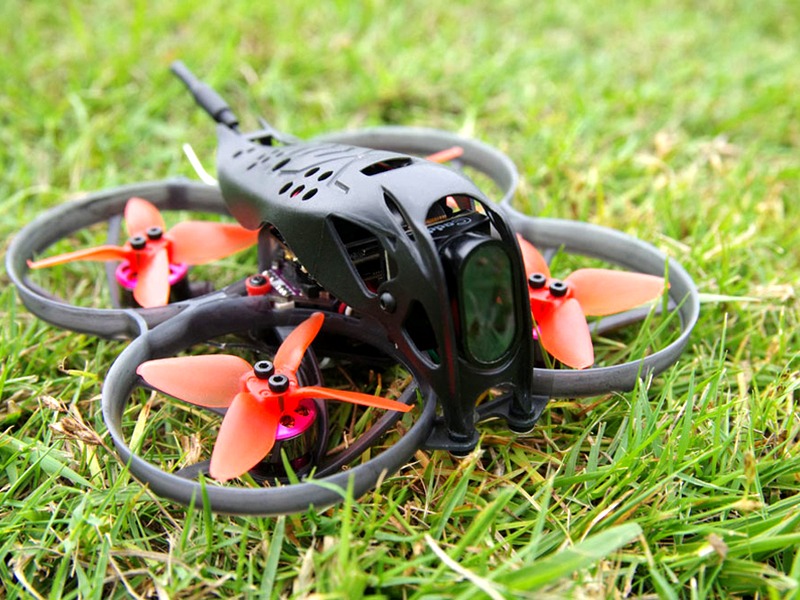How aerodynamics support drones fly?

Aerodynamics are essential for the successful operation of drones. Drones rely on the principles of aerodynamics to generate lift, allowing them to stay airborne for extended periods of time. Without the principles of aerodynamics, drones would be unable to stay in the air.
Aerodynamics is the study of how air interacts with objects in motion. It is the science behind how an object moves through the air, and how the air affects the object's motion. The principles of aerodynamics are used to understand how airfoils, such as wings, generate lift. This lift is what allows drones to remain airborne.
The lift generated by a drone is created by the airfoil shape of its wings. The wings are designed to create a curved surface that creates a low-pressure area above the wing. This low-pressure area creates a vacuum that pulls the drone upward. The wings also create a high-pressure area below the wing, which pushes the drone upward. The combination of these two forces creates the lift that allows the drone to stay airborne.
In addition to lift, aerodynamics also helps drones maintain stability while in the air. The airfoil shape of the wings creates a drag force that helps to stabilize the drone in the air. This drag force is created by the air flowing over the wings, creating a force that pushes the drone in the opposite direction of the airflow. This helps to keep the drone stable and prevents it from drifting off course.
Finally, aerodynamics also helps drones to maneuver in the air. By changing the angle of attack of the wings, the drone can generate additional lift, allowing it to climb or descend. This is especially useful for drones that are used for aerial photography, as they can easily adjust their altitude to capture the perfect shot.
In conclusion, aerodynamics are essential for the successful operation of drones. Without the principles of aerodynamics, drones would be unable to stay in the air. The airfoil shape of the wings creates lift, drag, and maneuverability, allowing drones to remain airborne and stable, and to adjust their altitude as needed. Without aerodynamics, drones would be unable to fly.
Comments / Question
2. Stability: Aerodynamic forces can be unpredictable and difficult to control, making it difficult to maintain a stable flight path.
3. Wind: Wind can be a major challenge for drones using aerodynamics, as it can cause turbulence and affect the lift generated by the drone.
4. Weight: The heavier the drone, the more lift it needs to generate, which can be a challenge for smaller drones.
5. Cost: Aerodynamic designs can be expensive to implement, making them cost-prohibitive for some applications.
1. Improved Flight Efficiency: Due to aerodynamic principles, drones that use aerodynamic principles can more efficiently convert power into lift, allowing them to fly faster and further with the same amount of energy.
2. More Attractive Design: The use of aerodynamics can lead to sleeker, more attractive drone designs, as well as lighter and smaller devices when compared to those without aerodynamic principles.
3. Reduced Drag: By minimizing turbulent airflows, aerodynamics can reduce the drag that drones experience, allowing them to fly further and faster.
4. Greater Stability: Aerodynamics provide stability to drones, helping to prevent them from flipping over, shaking, or stalling in the air.
5. Improved Control: Principles of aerodynamics can help improve control and orientation of drones, allowing them to make more accurate maneuvers, and providing greater overall control to the operator.
2. Drag: Drag is the force that opposes the drone’s forward motion. It is generated by the air passing over the drone’s wings or rotors.
3. Thrust: Thrust is the force generated by the drone’s motors or propellers. It is what propels the drone forward and is the main source of its forward motion.
4. Weight: The weight of the drone is the force that opposes lift and must be balanced by the lift generated by the drone’s wings or rotors.
5. Center of Gravity: The center of gravity is the point around which the drone’s weight is balanced. It must be carefully positioned to ensure the drone is stable in flight.
6. Airfoil Shape: The shape of the drone’s wings or rotors is designed to generate lift. The airfoil shape helps to create an area of low pressure above the wing or rotor, which generates lift.

